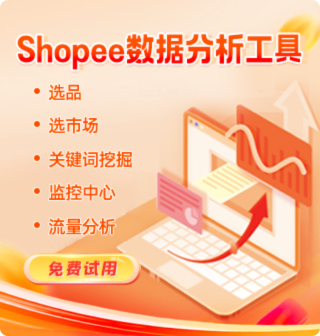-
用户190****9449
Shopee Operating Model: An In-Depth Exploration
Shopee, as one of the leading e-commerce platforms in Southeast Asia and beyond, has developed a highly effective operating model that underpins its rapid growth and market success. Understanding this operating model provides valuable insights into how Shopee manages its marketplace, logistics, customer engagement, and overall ecosystem to deliver a seamless shopping experience for millions of users.
This article aims to break down Shopee’s operating model in detail, including its key components, value drivers, and practical lessons for businesses seeking to emulate its success.
1. What is an Operating Model?
An operating model defines how a company organizes its resources, processes, technologies, and people to create and deliver value. For Shopee, this model describes how it connects buyers, sellers, logistics partners, and other stakeholders through an integrated digital ecosystem.
2. Core Components of Shopee’s Operating Model
a) Marketplace-Driven Platform
At its core, Shopee operates as a marketplace platform rather than a traditional retailer.
Seller-Centric Approach: Shopee empowers millions of individual sellers and small-to-medium enterprises (SMEs) to list products directly on the platform.
Product Diversity and Scale: By enabling sellers to onboard easily, Shopee offers a vast range of products, from electronics and fashion to groceries and services.
Commission-Based Revenue: Shopee generates revenue primarily through commissions on sales, advertising fees, and value-added services rather than inventory ownership.
b) User Experience and Technology
Shopee invests heavily in technology to create a smooth and engaging customer journey.
Mobile-First Design: With markets in mobile-heavy regions, Shopee’s app is optimized for mobile devices with intuitive UI/UX.
Personalization & AI: Shopee uses AI-driven recommendations, search algorithms, and dynamic pricing to increase conversion rates.
Secure Payment Gateway: ShopeePay and other integrated payment options ensure safe, flexible transactions.
Customer Support & Dispute Resolution: In-app chatbots and human agents assist users in real time, resolving issues quickly.
c) Integrated Logistics Ecosystem
Efficient logistics is crucial for Shopee’s promise of fast and reliable delivery.
Partnership Model: Shopee collaborates with local and regional courier companies (e.g., Ninja Van, J&T Express) rather than building its own fleet.
Fulfillment Centers: In select markets, Shopee operates or partners with warehouses for inventory consolidation and faster shipping.
Last-Mile Delivery: Emphasis on last-mile optimization to reduce delivery times, especially in urban and semi-urban areas.
Order Tracking: Real-time tracking enhances transparency and customer trust.
d) Marketing and Growth Engine
Shopee’s growth is fueled by aggressive marketing and engagement programs.
Flash Sales & Mega Campaigns: Events like 9.9, 11.11, and 12.12 offer steep discounts, driving huge spikes in traffic and sales.
Shopee Live & Social Commerce: Live streaming and community engagement tools help sellers build relationships with customers.
Shopee Ads: Sponsored product ads and keyword bidding enable sellers to boost visibility.
Loyalty and Rewards: Points, cashback, and voucher systems incentivize repeat purchases.
e) Data-Driven Decision Making
Data analytics permeates all aspects of Shopee’s operations.
Seller Performance Monitoring: Dashboards track key metrics such as order fulfillment rate, cancellation rate, and customer ratings.
Buyer Behavior Analysis: Insights inform marketing campaigns, inventory management, and platform improvements.
Fraud Detection: Automated systems monitor transactions to prevent fraud and ensure platform integrity.
3. Shopee’s Operating Model Compared to Traditional E-Commerce
Unlike inventory-holding retailers like Amazon, Shopee operates a marketplace model emphasizing:
Asset-Light Strategy: By relying on third-party sellers and logistics partners, Shopee reduces capital expenditure and operational risks.
Rapid Scalability: The model allows quick expansion into new markets without the need for physical stores or warehouses initially.
Flexible Seller Ecosystem: Sellers maintain control of their inventory and pricing, fostering diversity and competition.
4. Key Value Drivers Behind Shopee’s Operating Model
Localized Market Approach: Shopee customizes its platform and operations according to local cultural preferences, payment habits, and regulatory environments.
Mobile Penetration Leveraging: Focusing on mobile users in emerging markets where smartphones dominate internet access.
Ecosystem Synergy: Integration of payments (ShopeePay), logistics, marketing, and customer service creates a seamless experience.
Strong Seller Enablement: Tools and educational programs help sellers improve product listings, marketing, and fulfillment.
Customer-Centric Innovation: Continuous feature updates based on user feedback keep the platform relevant.
5. Lessons and Practical Insights for Businesses
a) Embrace a Marketplace Model to Scale Quickly
Marketplaces reduce the need for inventory ownership and allow leveraging third-party sellers to offer a vast product range.
b) Invest Deeply in Mobile and AI Capabilities
In markets with predominantly mobile shoppers, intuitive apps and AI personalization are key competitive advantages.
c) Build Strategic Logistics Partnerships
Rather than owning all logistics assets, collaborating with local partners can provide flexibility and cost efficiency.
d) Use Data to Drive All Aspects of the Business
From marketing to fraud prevention, data analytics should be embedded in daily operations.
e) Localize Strategies per Market
Instead of a one-size-fits-all approach, tailor user experience, payment methods, and promotions to local preferences.
6. Challenges in Shopee’s Operating Model
Balancing Seller Quality and Scale: Ensuring reliable product quality and service while onboarding millions of sellers.
Intense Market Competition: Competing with regional and global e-commerce players requires constant innovation.
Logistics Complexity: Managing cross-border shipments and last-mile delivery in diverse geographies.
Regulatory Compliance: Navigating different countries’ tax, data privacy, and trade laws.
Conclusion
Shopee’s operating model is a finely tuned ecosystem combining a marketplace platform, technology innovation, logistics partnerships, and aggressive marketing. Its asset-light, customer-centric approach enables rapid scaling across diverse emerging markets while maintaining a strong focus on user experience and operational efficiency.
For businesses and entrepreneurs, Shopee’s model offers a blueprint on how to build a scalable, flexible e-commerce platform tailored to local market nuances. Success lies in harmonizing technology, partnerships, and data-driven insights to meet evolving customer needs and competitive pressures.

